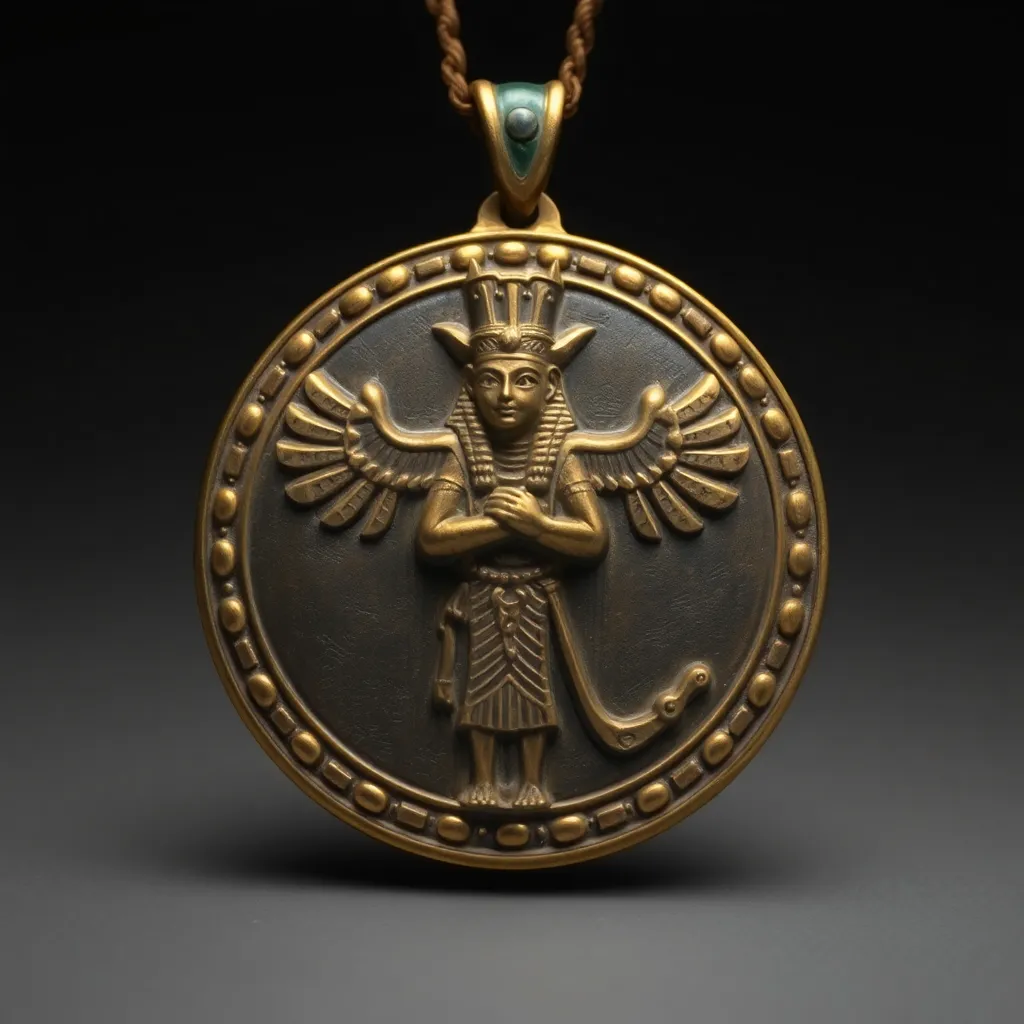The Amulet of Khonsu: Lunar God and Protector of Travelers
I. Introduction
Khonsu, revered as the lunar god in ancient Egyptian mythology, embodies the moon’s mystique and its cyclical nature. As a figure of great significance, he represents not only the passage of time but also the protective qualities associated with nighttime travel. The Amulet of Khonsu, crafted with care and imbued with symbolic meaning, has transcended its ancient roots to hold relevance in modern spiritual practices.
This article aims to delve into the mythological background of Khonsu, explore the symbolism of his amulet, and examine its historical significance as well as its place in contemporary spirituality.
II. The Mythological Background of Khonsu
Khonsu’s origins are intricately tied to the ancient Egyptian pantheon. He is often depicted as a youthful figure, adorned with a sidelock of youth and a lunar disk atop his head.
- Khonsu is the son of Amun and Mut, making him part of a triad of deities associated with Thebes.
- His siblings include the goddess Ma’at, representing truth and order.
As a lunar deity, Khonsu is associated with the moon’s phases and is believed to influence the tides of life. His role extends beyond mere astronomy; he is considered a god of healing, fertility, and protection.
Khonsu’s connection with time is particularly significant. The Egyptians viewed time as cyclical, and Khonsu, with his ability to traverse the night sky, was seen as a harbinger of change and renewal.
III. Symbolism of the Amulet of Khonsu
The Amulet of Khonsu is more than a decorative piece; it is a powerful symbol laden with meaning. Typically crafted from various materials such as gold, silver, or precious stones, these amulets often feature intricate designs that reflect Khonsu’s lunar connections.
- The moon, often depicted in phases, symbolizes the cycle of life and rebirth.
- Common materials for amulets include turquoise, lapis lazuli, and carnelian, each believed to hold protective properties.
In addition to its aesthetic appeal, the amulet serves as a representation of protection and guidance for travelers. It was believed that wearing the Amulet of Khonsu would ensure safe passage through the dangers of the night, reflecting the deity’s role as a guardian of those who journey under the moonlight.
IV. Historical Significance of the Amulet
The Amulet of Khonsu has been the subject of numerous archaeological findings, revealing its importance in ancient Egyptian culture. Artifacts have been uncovered in burial sites, temples, and marketplaces, showcasing the widespread reverence for this deity.
- Archaeological sites such as Karnak and Luxor have yielded amulets dedicated to Khonsu, indicating his worship across various dynasties.
- Travelers often carried these amulets, believing in their protective qualities during their journeys.
Moreover, the amulet was integral to rituals aimed at ensuring safety during travels. Offerings and prayers to Khonsu were commonly performed, emphasizing the belief in divine protection against the perils of the night.
V. The Amulet in Modern Spiritual Practices
In contemporary times, there has been a revival of interest in ancient Egyptian symbols and their meanings. The Amulet of Khonsu has regained popularity among those seeking spiritual protection and guidance.
- Modern spiritual seekers often wear or carry the amulet as a talisman during travels, hoping to invoke Khonsu’s protection.
- Its appeal lies in its rich history and the timeless quest for safety and guidance during life’s journeys.
Furthermore, practitioners of various spiritual paths integrate the amulet into rituals aimed at fostering personal growth, healing, and connection to the divine lunar energies.
VI. Rituals and Offerings to Khonsu
Historically, rituals dedicated to Khonsu were elaborate and steeped in tradition. Offerings of incense, food, and small figurines were common practices to honor the lunar god and seek his favor.
- These rituals often took place during the full moon, a time believed to amplify Khonsu’s powers.
- Modern interpretations of these rituals may include meditation, intention setting, and the use of the amulet as a focal point for spiritual connection.
Crucially, the effectiveness of the amulet and the rituals associated with it often depended on the intention and belief of the individual. The faith placed in the amulet’s power could significantly enhance its perceived efficacy.
VII. The Amulet of Khonsu in Popular Culture
The Amulet of Khonsu has found its place in popular culture, often appearing in literature, art, and media. Its representation serves to bridge ancient mythology with modern storytelling.
- Books and films exploring ancient Egypt frequently reference Khonsu, weaving his narrative into their plots.
- Artworks inspired by Egyptian motifs often feature the amulet, showcasing its aesthetic and cultural significance.
This influence not only promotes interest in ancient Egyptian culture but also highlights the enduring legacy of its symbols in contemporary society.
VIII. Conclusion
The Amulet of Khonsu stands as a testament to the rich tapestry of Egyptian mythology. Through its intricate symbolism and historical significance, it continues to resonate with people today, serving as a reminder of the protective qualities associated with the lunar god.
As we reflect on the lasting legacy of the Amulet of Khonsu, it becomes clear that cultural symbols hold profound importance in our personal and spiritual journeys. By embracing these ancient traditions, we cultivate a deeper understanding of ourselves and the world around us.




